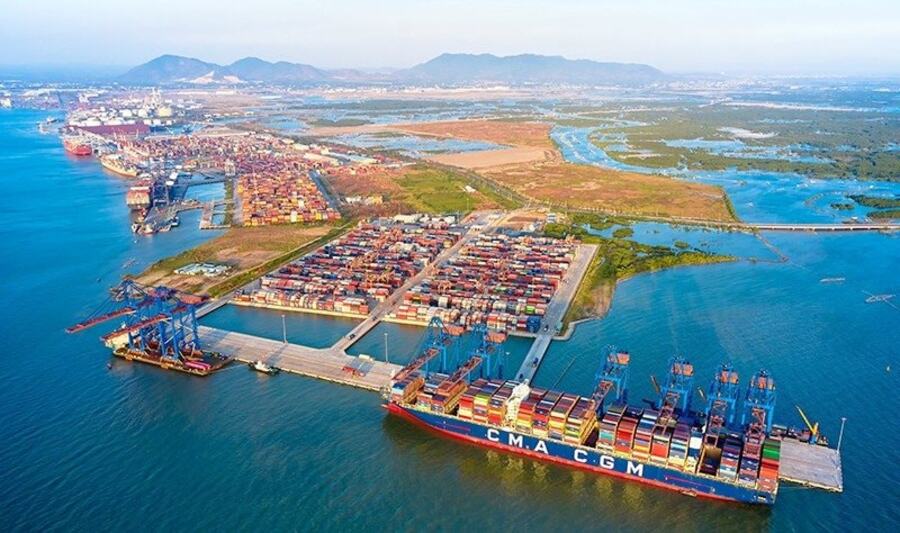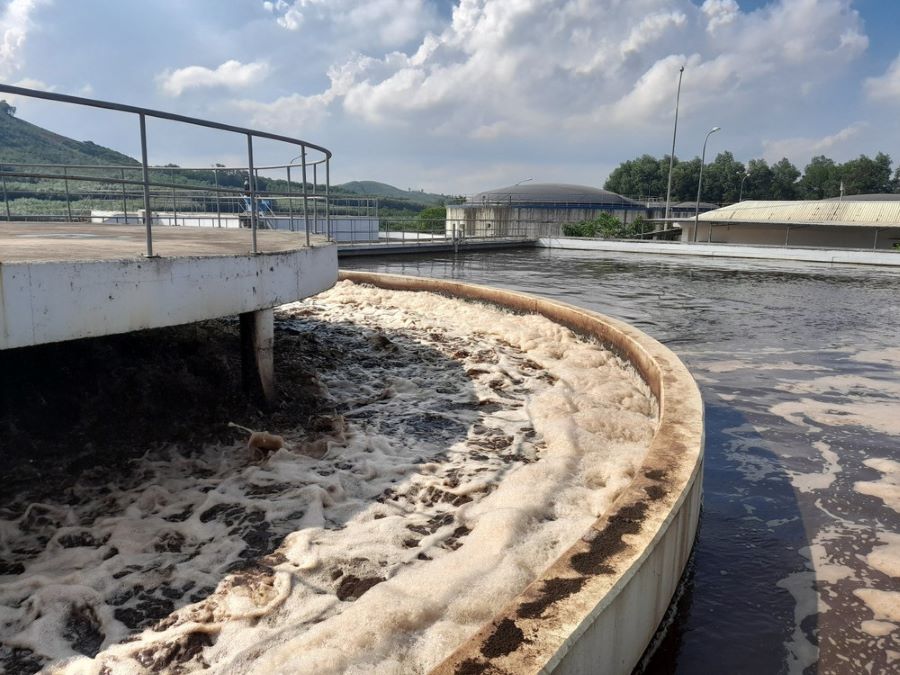Marine port wastewater treatment is a crucial step in the operation of modern ports, especially in the context of marine environments being negatively impacted by transportation and cargo handling activities. From container cleaning processes, detergents, sewage, to oil, grease, and residues, all present significant pollution risks. Therefore, wastewater treatment at ports is not only a legal requirement but also an environmental responsibility that businesses must take seriously.
1. Characteristics of Marine Port Wastewater
Wastewater generated at marine ports is very complex, both in composition and in fluctuating discharge volumes. Due to port activities being closely related to cargo transportation, container cleaning, vehicle maintenance, and crew operations, along with the impact of rainwater and ship arrivals, the wastewater can be categorized into the following groups:
-
Wastewater from container cleaning and storage areas: This is the most common and polluted wastewater at ports. During transportation, containers can carry spilled goods, torn packaging, chemicals, preservatives, and even perishable items. When containers are cleaned with water and specialized chemicals, these contaminants are washed out with the wastewater.
-
Sewage from the port: Ports often have a large and continuous workforce, leading to significant amounts of sewage from restrooms, dining areas, and rest areas. Although this wastewater is easier to biodegrade, if not collected and treated properly, it can cause unpleasant odors and affect sanitation.
-
Wastewater from ships and operating equipment: When ships dock, cargo handling, fuel loading, and maintenance activities generate wastewater from machinery, cooling tanks, and deck cleaning. Notably, ballast water, used to stabilize ships when not carrying cargo, is pumped out at the port and poses significant environmental risks.

Marine port wastewater contains many complex and hazardous substances
2. Why is Marine Port Wastewater Treatment Necessary?
Marine port wastewater treatment plays a key role in today’s environmental practices due to:
-
Ensuring legal compliance: By regulation, industrial wastewater, including marine port wastewater, must meet certain standards before being discharged. Violation of these regulations may result in fines, activity suspensions, or the requirement to invest in a compliant treatment system.
-
Protecting marine environments and aquatic life: Untreated wastewater containing heavy metals, toxic chemicals, and oils can pollute water sources, damaging marine life and negatively affecting local fisheries and coastal tourism.
-
Contributing to sustainable development and enhancing business reputation: A clean, environmentally-friendly port will greatly enhance a company’s image, particularly in international trade agreements where environmental standards are increasingly becoming a major evaluation criterion.
Marine port wastewater treatment is an urgent issue for many businesses today
3. Marine Port Wastewater Treatment Process
3.1. Oil Separator Tank
The oil separator tank is the first step in the treatment system, where wastewater from container cleaning or other oil-containing sources is treated to remove floating oil impurities. Based on the principle of gravity, oil and fats, being lighter than water, float to the surface. This tank is typically equipped with baffles and a flotation system to optimize the separation process. A skimmer system collects the floating oils, preventing them from contaminating later treatment stages.
3.2. Collection Tank
After oil separation, wastewater is directed into a collection tank, acting as a temporary storage for wastewater from different areas. This tank is equipped with a submersible pump to move wastewater to the next treatment stage. The pump flow rate is controlled via a valve to maintain a stable water input to the reaction tank.
3.3. Reaction Tank
In the reaction tank, wastewater undergoes chemical and physical treatment processes. Chemicals like PAC (Poly Aluminium Chloride) and PE (Polymer) are dosed directly into the wastewater to induce coagulation and flocculation reactions. This process helps bind suspended particles and small contaminants into larger flocs that can easily settle in the following treatment steps.
3.4. Settling Tank
After the chemical reaction, the wastewater flows into a settling tank to separate sludge and clear water. Heavier sludge particles settle at the bottom, while the clear water at the top is moved to the next stage of treatment. The sludge is collected and directed to a sludge holding tank for periodic treatment.
3.5. Equalization Tank
The equalization tank stabilizes flow and contaminant concentration in the wastewater before biological treatment. It is equipped with an aeration system to provide oxygen and mix the wastewater. The aerated environment helps reduce odors and creates favorable conditions for microorganisms in the next treatment stages.
3.6. Aerobic Treatment Tank
This is the primary biological treatment stage, where aerobic microorganisms break down organic compounds in the wastewater. An aeration system at the bottom ensures continuous oxygen supply, creating optimal conditions for microbial activity. This process effectively removes organic pollutants like BOD (biochemical oxygen demand) while generating biomass to further treat the water.
3.7. Settling Tank
After biological treatment, the wastewater flows to a second settling tank to separate biological sludge. The settled sludge is partly returned to the aerobic tank to maintain microbial density, while the remaining sludge is sent to the sludge holding tank. The clear water continues through to the next stages of treatment.
3.8. Intermediate Tank
The intermediate tank maintains a stable water volume, regulating flow and creating favorable conditions for pump operations before filtration. This stage ensures the filtering system operates continuously and efficiently.
3.9. Pressure Filtration Column
In the final stage, wastewater passes through a pressure filtration column to remove remaining impurities such as suspended solids and fine particles. The filter media typically includes gravel, quartz sand, and activated carbon. The filter requires periodic backwashing to maintain filtration efficiency and ensure high-quality effluent.
Marine port wastewater treatment is not only a legal obligation but a crucial factor in ensuring sustainable development for both the logistics industry and marine ecosystems. As the blue economy expands, ports must focus not just on operational efficiency but also on their environmental responsibilities. Achieving this requires investing in modern, comprehensive wastewater treatment systems that address the complex pollution issues specific to marine ports. Đại Nam, with years of environmental expertise, offers businesses the most advanced and compliant wastewater treatment solutions.

